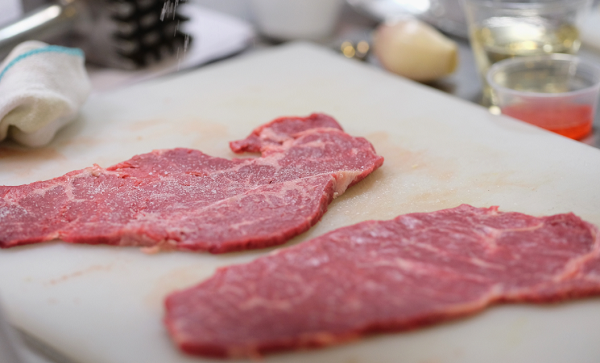The Key To Improving Lab-Grown Meat: Cotton Candy

Cotton candy is a staple of every carnival. Since 1904, children and adults alike have been entranced by the unique spinning process that conjures up big sugar clouds seemingly out of nowhere.
Scientists are now using this concept to improve lab-grown meat in its mouthfeel and taste to better resemble meat.
The technique researchers at the Harvard John A. Paulson School of Engineering and Applied Sciences (SEAS) are using is known as immersion Rotary Jet-Spinning (iRJS). It uses centrifugal force to spin long nanofibers of specific shapes and sizes – much like when making cotton candy.
Thus far, they have grown rabbit and cow muscles on edible gelatin scaffolds that resemble the texture and consistency of meat, illustrating that realistic meat products may be an eventuality, sans the need to rear and butcher animals.
All this began after Kit Parker, the Tarr Family Professor of Bioengineering and Applied Physics at SEAS and senior author of the study, was a competition show judge on the Food Network.
"The materials science expertise of the chefs was impressive," said Parker. "After discussions with them, I began to wonder if we could apply all that we knew about regenerative medicine to the design of synthetic foods. After all, everything we have learned about building organs and tissues for regenerative medicine applies to food: healthy cells and healthy scaffolds are the building substrates, the design rules are the same, and the goals are the same: human health. This is our first effort to bring hardcore engineering design and scalable manufacturing to the creation of food."
The hardest thing about bioengineering meat is reproducing the skeletal muscle and fat tissue characteristic of animal meat, which grow in long, thin fibers -- as seen in the grain of a steak or the strings that come apart when shredding pork or chicken.
"Muscle cells are adherent cell types, meaning they need something to hold onto as they grow," said Luke Macqueen, first author of the study and postdoctoral fellow at SEAS and the Wyss Institute for Bioinspired Engineering. "To grow muscle tissues that resembled meat, we needed to find a 'scaffold' material that was edible and allowed muscle cells to attach and grow in 3D. It was important to find an efficient way to produce large amounts of these scaffolds to justify their potential use in food production."
The lab-grown meat has been mechanically tested for comparison alongside real rabbit, bacon, beef tenderloin, prosciutto and other meat products. Although their goal may not be as simple as spinning cotton candy, the researchers have shown that fully lab-grown meat is a possibility.
(This article was edited to correct some factual errors)
© Copyright IBTimes 2024. All rights reserved.





















